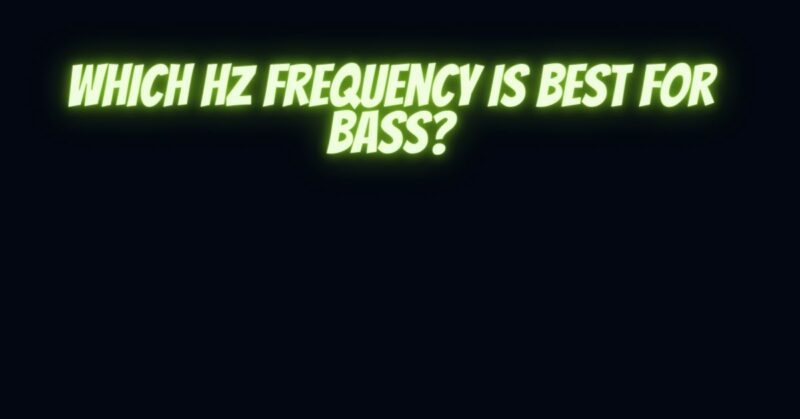Bass frequencies are the heartbeat of audio, adding depth, resonance, and impact to music and soundscapes. In the pursuit of powerful and immersive bass, the question often arises: Which Hz frequency is best for bass? While there’s no one-size-fits-all answer, this article will delve into the considerations, popular choices, and factors that influence the selection of an optimal Hz frequency for bass that resonates with your audio goals.
Understanding Hz Frequencies and Bass:
Hz, short for hertz, measures the number of vibrations or cycles that occur in one second. In the context of audio, Hz values correspond to the pitch or frequency of sound. Bass frequencies encompass lower Hz values and are responsible for producing the deep and resonant tones that underpin music and audio.
Considerations for Selecting the Best Hz Frequency for Bass:
- Musical Genre: Different musical genres place emphasis on different bass frequencies. For instance, electronic music may benefit from a focus on sub-bass frequencies, while rock music might benefit from a balanced representation of mid-bass and sub-bass.
- Listening Environment: The acoustics of your listening space significantly impact how bass frequencies are perceived. The size, shape, and furnishings of the room can affect bass resonance and distribution.
- Audio Equipment: The capabilities of your speakers and subwoofers influence how well they can reproduce specific bass frequencies. High-quality components designed for lower frequencies enhance accuracy.
- Personal Preferences: Your personal audio preferences play a vital role in determining the ideal Hz frequency for bass. Some listeners prefer deep and rumbling sub-bass, while others prioritize a balanced and impactful bass range.
Popular Bass Hz Frequency Choices:
- 20 Hz – 30 Hz (Sub-Bass): This range represents the deepest sub-bass frequencies, often felt as much as they are heard. It adds physical depth and impact to audio, creating a visceral experience.
- 40 Hz – 80 Hz (Mid-Bass): Mid-bass frequencies contribute to the richness and warmth of audio. This range enhances the presence of instruments like bass guitars and drums.
- 80 Hz – 120 Hz (Upper-Bass): Upper-bass frequencies provide a transition between midrange and bass frequencies, ensuring a smooth and cohesive transition between different audio elements.
Creating an Optimal Bass Experience:
Selecting the best Hz frequency for bass involves finding the right balance that complements the overall audio experience:
- Room Acoustics: Understand how your room’s acoustics impact bass distribution. Experiment with subwoofer placement to achieve even bass coverage.
- Crossover Settings: Set crossover points carefully to ensure seamless integration of bass frequencies with midrange and high frequencies.
- Personal Preferences: Listen to different Hz frequency ranges and assess how they align with your audio preferences. The ideal Hz frequency for bass is subjective and varies based on individual taste.
There is no single “best” Hz frequency for bass, as the optimal choice depends on musical genre, room acoustics, audio equipment, and personal preferences. Sub-bass, mid-bass, and upper-bass frequencies all contribute to a complete bass experience. By understanding these considerations and experimenting with different Hz frequency ranges, you can fine-tune your audio setup to achieve a bass experience that resonates harmoniously with the rest of your audio spectrum, creating a powerful and immersive auditory journey.

